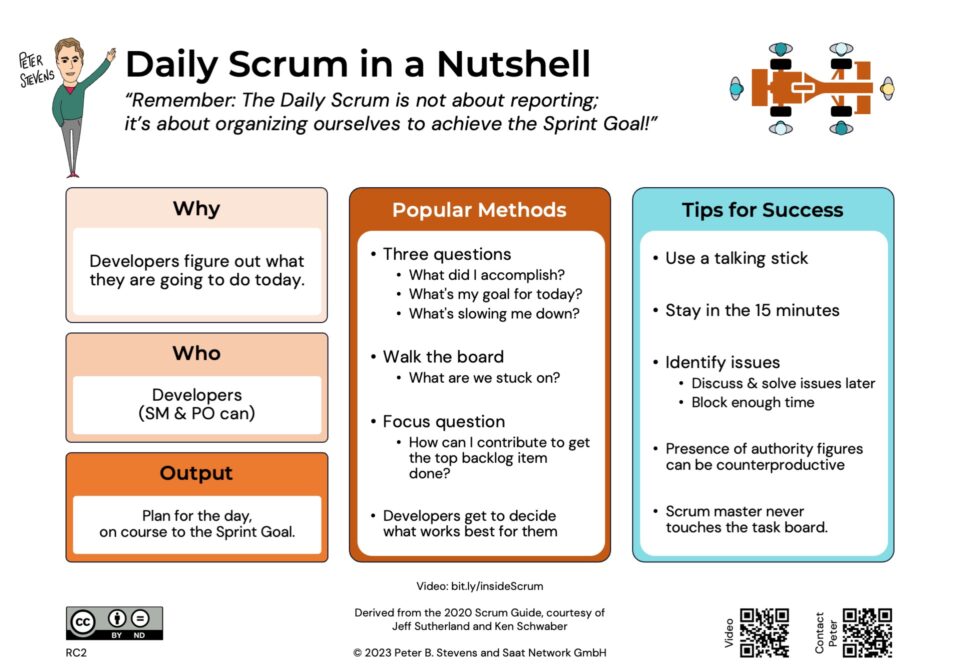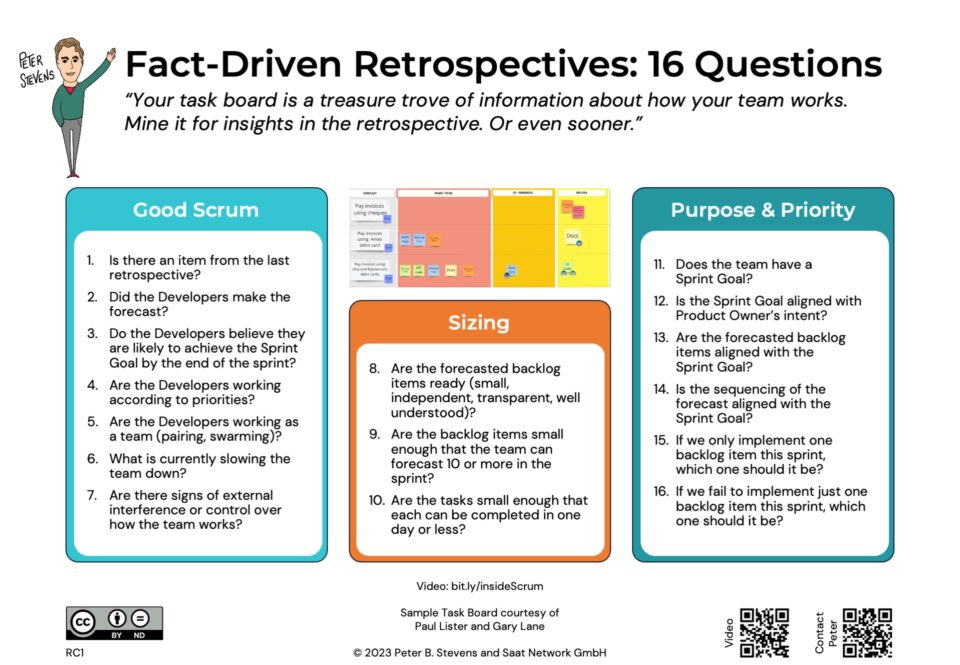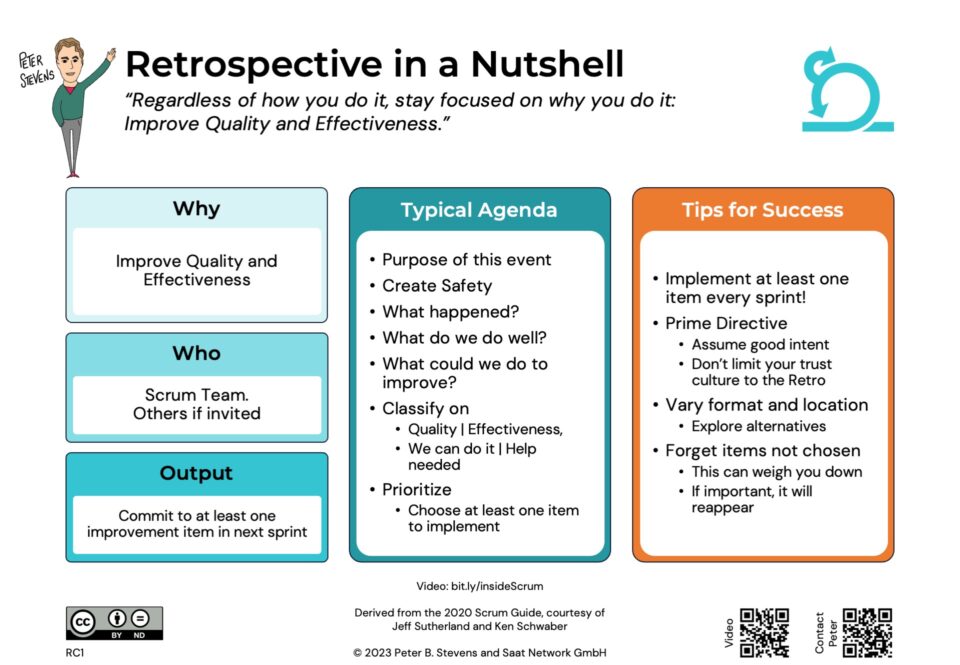Scrum Breakfast in Zürich: March 5, 2008
08-02-2008Fingerspell Flashcards – Done :-)
10-02-2008A few weeks ago, jp pointed me to an interesting article about the various levels of done:
“A feature is not “done” until all of the following can be said about it:
- “All unit tests are green.
- The code is as simple as it can be.
- It communicates clearly.
- It compiles in the automated build from a clean checkout.
- It has passed unit, functional, integration, stress, longevity, load, and resilience testing.
- The customer has accepted the feature.
- It is included in a release that has been branched in version control.
- The feature’s impact on capacity is well-understood.
- Deployment instructions for the release are defined and do not include a ‘point of no return’.
- Rollback instructions for the release are defined and tested.
- It has been deployed and verified.
- It is generating revenue.
“Until all of these are true, the feature is just unfinished inventory.”
At one level, the definition of done is one of the key parameters in the Sprint contract between Product Owner and Team. It contains procedural points which every team member much achieve before his tasks or stories can be checked off as done. The list should be long enough (or thorough enough) to assure the desired level of quality and yet short enough and concrete enough, that the points can actually be accomplished.
At a project level, getting to done means actually getting a return on the investment in software. Any software which is not generating an ROI is inventory sitting the warehouse, costing money, losing value and otherwise doing nothing useful. This aspect of done is the responsibility of the Product Owner, not the development team.
And getting a product done means more than just getting the features done. Done means the product is out there producing a return on investment. And there are always cool new features to implement.
In the last year, I have been involved in two major projects which have come in on time and on budget. Both were managed using Scrum and had a Product Owner who had his eye on the ball, who was focused on getting the project out the door. A third major project (which wasn’t using Scrum and which I am now trying to bring order to) doesn’t seem to have had anyone focussed on getting the product out the door. And it shows.
One secret of successful projects: a product owner who is genuinely focused on getting a ROI from his project. It’s not the only key ingredient, but without it, the project will go nowhere.
[Update: Check out the Lean Definition of Done]




